2013-07-26 In American discussions of the re-shaping of Pacific defense, naturally the primary focus is upon the American role and contribution. Lost in such a focus often is how the Asian allies are shaping their defense and security futures and shaping those futures in part by building upon evolving European systems.
European defense industry plays a growing role in Asian defense and security.
And they are doing so by offering core products of interest in the region and being congruent with core demands of the 21st century Asian customers.
First, the larger Asian customers clearly wish to expand their capabilities to produce their “own” equipment. What this means in a global age is that industrial partnerships between European and Asian firms are a key part of the growing European presence. This means as well that “re-export” of European systems from Asia will be part of the 21st century reality of the global market.
Second, there is clear concern with security of supply on the part of Asians, notably with regard to the need to surge to support operations, which might be controversial in other parts of the world.
A key European company working closely with Asians is Eurocopter. Eurocopter has had a presence n Asia for many years, but this presence is expanding, and with its various partnership strategies expanding the type of presence. Eurcopter does not simply export into the region, but it is shaping blended products with Asians, which can in turn be exported within the region, and perhaps beyond.
And in the past few years, Eurocopter has expanded its role in the security and defense markets. Notably examples are the Surion helicopter built in South Korea, and the Tiger and NH-90 helicopters in Australia.
A recent Eurcopter White Paper has highlighted the baseline nature of the Eurocopter presence in Asia:
Eurocopter has been present in Asia Pacific for over 40 years and now has a network of 10 subsidiaries in key countries such as Singapore (serving 15 territories in the region under the banner of Eurocopter South East Asia), Malaysia, Indonesia, Philippines, Thailand, India, China, Japan, Korea and Australia (serving the Pacific region).
Asia Pacific is a major contributing region to the Eurocopter Group in the civil and para-public sector, and is projected to have the highest growth potential in the coming years. Averaging about 100 helicopter sales a year, Asia’s order intake represents about 20% of the Group’s bookings today. With over 1,200 helicopters currently in service, Eurocopter accounts for 38% of the region’s operating fleet.
Support and Services, including training, continue to be a major focal area for the Group as well as in Asia. Maintenance, repairs and overhaul (MRO) activities achieved impressive growth in 2012 – Eurocopter Japan recorded a two-fold increase; while Eurocopter South East Asia and Eurocopter Malaysia achieved a 51% and 40% increase respectively.
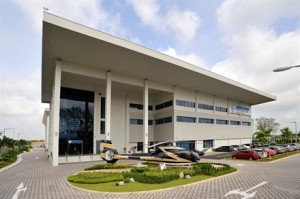
The Whiite Paper adds as well that Eurcopter’s presence in the military sector is growing as well.
Asia also presents the greatest potential in the military sector, with an estimated US$10 billion worth of defense helicopter business before the end of the decade. Eurocopter has successfully secured some important contracts in the last few years, including the supply of 12 EC725 to the Royal Malaysian Air Force and six EC725 to the Indonesian Air Force.
On-going tenders for Eurocopter include India’s requirements for 197 Reconnaissance & Surveillance Helicopters and 56 Naval Utility Helicopters, to which Eurocopter is proposing its AS550 C3 Fennec and AS565 MB Naval Panther respectively.
Eurocopter White Paper on APR as of May 2013
Recently, Second Line of Defense had the opportunity to discuss the evolving strategy and the approach with the senior Eurocopter official responsible for Asia.
Mr. Ducrot serves as Senior Vice President for Asia at Eurocopter SAS. He joined Eurocopter in 2003, with his previous management assignments as the Senior Vice President – Asia-Pacific; and Chairman of Eurocopter China, Eurocopter Japan and the Singapore-based Eurocopter South East Asia subsidiaries.
He began his industry career in 1980 as aeronautical software engineer at the Dassault Electronique Company. He subsequently joined Thomson-CSF in the United States as program director followed by his appointment as the Strategy and Cooperation Director, working with major U.S. aircraft manufacturers.
In 1991, Mr. Ducrot became the Director of Marketing and Sales in Asia for Thomson TRT Defense. He then was hired by the Lagardere group, where he was in charge of all sales and marketing activities in Asia for Matra Defense and then the European MBDA missile company – a subsidiary of EADS.
SLD: How would you describe the Eurocopter presence in Asia in the security and defense fields?
Ducrot: I would start by talking about our presence in South East Asai. We have worked gradually overtime in Thailand, Indonesia and Malaysia to build a significant set of customers in the security and defense sector. We have built upon the EC-725 and the Fennec to supply the armed forces of Thailand, Indonesia and now Malaysia with their Search and Rescue (SAR) and light helicopter needs.
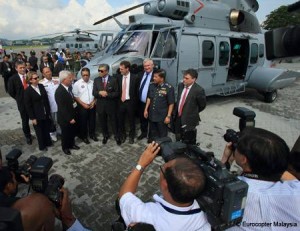
We have delivered the 725 to the Indonesian Air Force and are discussing now the next phase of the program, a second batch for the Air Force. We won a contract last year as well with the Indonesian Army, and are in competition to supply helicopters to the Indonesian Navy.
With regard to Thailand, we have provided the 725 to the Air Force and the Fennec to the Army.
We are also now providing the 725 to the Malaysian Air Force as well. We are hoping to be able to supply the Fennec to the Malaysian Army as well.
We are providing most of the helicopters for SAR in the region and to support their anti-piracy operations, which as you know is a major challenge facing these nations.
SLD: Your relationship with South Korea has provided an interesting example of your approach to the military market, with a key role played by your partner Korea Aerospace Industries (KAI). Could you discuss your working relationship and approach in South Korea?
Ducrot: In 2006 we signed an agreement with KAI which has led to the development of the Surion helicopter for the Republic of Korea Army Aviation (ROKAA). The helicopter first went into service this year.The South Koreans are planning to acquire 245 of these helicopters and to derive several versions of the helicopter.
It really is a Korean helicopter. One needs to realize that about 80% of the helicopter has been redesigned by the South Koreans; it is not simply license production for it is a newly designed helicopter.
And we have an agreement to export this helicopter with them to selected markets. This is not a problem for us for the helicopter has no equivalent in the Eurocopter line. It is a new build 8.5-ton helicopter.
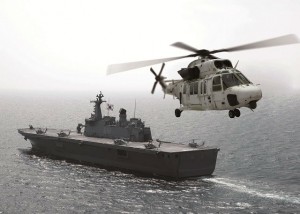
The South Koreans and Japanese are really at the top of the game globally in terms of production technologies and techniques. We have advantages currently in design and having mature technologies available to the market place; but really the South Koreans and Japanese have much to teach the world in terms of production technologies and approaches.
(For a US view of the importance of South Korean production technologies see the interview with the head of NASSCO, Fred Harris:
https://sldinfo.com/building-a-new-ship-fred-harris-discusses-the-mobile-landing-platform/).
We are involved in a competition for another helicopter program in South Korea, namely the light armed helicopter competition and we hope we can build upon our past success.
SLD: You have been successful as well with Australia acquiring the Tiger attack helicopters. Could you discuss the challenge of working in Australia?
Ducrot: A key part of the success of the Tiger has been shaping significant Australian presence and facilitating the kind of collaboration among the Tiger users, which allows the users to get best use or value out of the product and to shape follow-on, upgrades as well.
With regard to Australia, there are three key requirements for a company like Eurocopter.
First, one needs to be price competitive. One as well needs to ensure that the price is realistic; there is no point to losing money on a sale simply to win a competition.
Second, you have to become Australian. I would say that between 60 to 80 percent of your program must remain in Australia. Currently, we have about a 1,000 people working in Australia.
Third, one needs to facilitate the kind of user group relationships, which allow the customer to get best value out of the product. In the case of the Tiger, there is a strong bilateral relationship between the Australian and French forces to share operational information with regard to the Tiger experience.
SLD: I would assume that the NH-90 fits into a similar equation?
Ducrot: We have been successful with the NH-90 in the Asian maritime market, but would certainly hope to expand its presence. Australia and New Zealand have been key to the launch of the NH-90 in Asia. There is a great deal of interest in the product by the Japanese as well. We have been successful with regard to the EC135 in Japan as a training helicopter and we would like to build upon that success.
And with regard to the user group point you made earlier, there is even a bigger NH-90 user group than there is with Tiger. Several countries were the launch partners for the program and as a result form the basis for the kind of user group which can inform us about the most effective paths for upgrading the product over time.
We certainly are working to leverage our experience to date in Asia to be successful in India in the coming years. The Indians are looking to introduce new helicopters in all of their services in the coming years. There is a potential market there for around $10 billion by the end of the century.
Overall, it is clear that with the modernization of Asian forces and the evolution of the Asian economies, there will be an increase over time in the military market in Asia: in SE Asia, in Central Asia, India and North Asia.
SLD: Let me ask a final question. How important is logistical support, training, and maintenance in shaping your market strategy?
Ducrot: It is a really foundational element. We have several subsidiaries already in Asia, and have more than 2000 people working on support in the region. We have seven flight simulators in Asia as well. We are building out our capacity to support our helicopters in the region and obviously this is a crucial element for success in any defense program.
An Asian country is not going to buy a defense product, which they cannot support fully.
Editor’s Note: To provide readers with more detail on two key programs discussed by Mr. Ducrot, we are including material produced by Eurocopter, first with regard to the Surion program in South Korea and then with regard to the Tiger program in Australia.
The Surion Program in South Korea (as of July 2013)
On 18 Dec 2012, Korea Aerospace (KAI) delivered the first Surion helicopter to the Republic of Korea Army Aviation (ROKAA), which successfully went into service in May 2013. The delivery marks an essential milestone in the successful cooperation between Eurocopter and KAI, which started in 2006.
The Surion is an 8.7t multirole helicopter developed and manufactured in Korea. Eurocopter is contributing the Drive System as well as the Automatic Flight Control System.
During the 6-year development phase Eurocopter has provided extensive technical assistance through its Korean subsidiary KHDS in addition to transferring dedicated technology in a process, which has been recognized as a benchmark by EADS.
The ROKAA is planning to acquire 245 Surion helicopters to renew its fleet and to meet the military helicopter airlift needs of the country.
Based on the Surion, Korea intends to derive several versions including a naval and MEDEVAC variant.
Background
The Surion is Korea’s first indigenous military transport helicopter to be produced by Korea Aerospace Industries (KAI), with the support of Eurocopter as its primary partner. The official appointment of Eurocopter was made by the Korean government in December 2005 under the Korean Utility Helicopter (KUH) program.
The Surion is an 8.7 metric ton helicopter, which can carry 2 pilots and 16 troops (or 2 pilots plus 2 crew and 9 troops). 245 units of the Surion will be manufactured from 2011, to replace the Republic of Korea (RoK) Army’s ageing fleet of utility and transport helicopters.
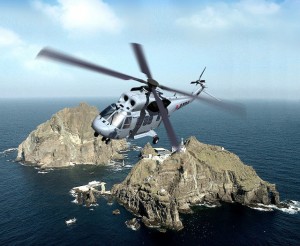
The KUH development phase started from 2006 and the Surion successfully completed the initial flight test on March 2010. It received Combat Usage Approval as scheduled in June 2012, completing the development phase on time.
The first Surion was delivered to the Republic of Korea Army Aviation (ROKAA) in December 2012, which successfully went into service in May 2013.
As the primary partner of KAI, Eurocopter’s role is to provide technical assistance and to supply the gearboxes, rotor masts, transmission and autopilot subassemblies for the helicopter. Eurocopter has, since 2006, set up a subsidiary in Korea called KHDS, to provide technical assistance and support technology transfer to KAI for the KUH program.
KAI’s and EC’s Respective Roles
KAI is the producer of the Surion, with Eurocopter as its primary partner for the development contract, involving two major areas:
a) Sharing of technical knowledge based on the Super Puma family MK1/2; providing technical support from head office as well as providing technical assistance in Korea with Eurocopter engineering teams based in Eurocopter’s Korea subsidiary, KHDS.
b) Development of subsystems, classified as “workshare items”, such as drive system, rotor mast and Automatic Flight Control System (AFCS).
Eurocopter is also a subcontractor of KAI for the Surion production contract, as KAI procures the above-mentioned workshare items for serial production.
What is the role of KHDS?
Eurocopter has, since 2006, set up a subsidiary in Korea called KHDS, where Eurocopter engineering teams are based to provide technical assistance and the transfer of technology to KAI for the KUH program.
KHDS has an office in Sacheon to provide technical assistance to KAI for the KUH program; and another office in Seoul for spare parts and support service activities for EC’s civilian products.
Being close to the customer is important for Eurocopter. KHDS is ideally located close to Eurocopter’s main customer sites in order to meet all requirements he has and will have.
Deliveries to date?
KAI has delivered 12 Surion helicopters to ROKAA, and a total of 24 helicopters scheduled to be delivered by the end of 2013.
The Tiger Program in Australia
The ARH Tiger is a two-seat, armed reconnaissance helicopter designed to perform a wide range of missions. Faster and more agile than its competitors, the ARH Tiger can detect and engage targets at longer ranges, and more easily coordinate and control combined arms teams.
The Commonwealth of Australia ordered 22 ARH plus full training system (including flight and ground simulators), engineering, maintenance, logistics and supply support to the ARH System for Australian Army in 2001 under the Air 87 Program.
In 2001, the contract was valued at AUD1.2bn.
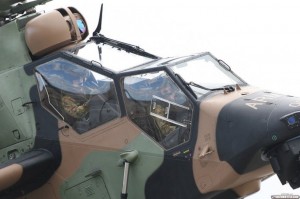
The Tiger boasts sophisticated avionics and mission equipment capability and will serve Australia for many years. The ARH Tiger program has created 220 new jobs in Australia, AUD40m in investment and over AUD640m injected into the Australian economy through flow-on benefits.
Characteristics of the ARH Tiger Program include:
State of the Art Capabilities
The ARH Program is delivering a state of the art Armed Reconnaissance helicopter and associated support to the Australian Army; a capability that the Army has previously not had.
Australian Industry Capability Augmented
The Program has developed and delivered an in-country design and development environment for the ARH System software (i.e. high technology jobs and strategically important local capabilities for enhancement of the ARH capability to meet the Army’s evolving and emerging requirements).
Strong working partnership forged with the customer
The Commonwealth of Australia and Australian Aerospace re-baselined the program with a schedule that recognizes the complexity of the capability being delivered and the requirement for the Commonwealth to be involved in the development of that capability.
Summary
ARH is a proven helicopter. The Australian ARH is based on European variants that have been deployed in a number of operational theatres to great effect.
The Australian Army has flown over 11500 ARH flight hours to date.
Australian Aerospace delivered the final of all 22 Tiger ARH’s to the Australian Army in December 2011 with all contracted capability available.
For a discussion of the role of air mobility in security and defense operations see the following:
https://sldinfo.com/flipbooks/AirMobility/

